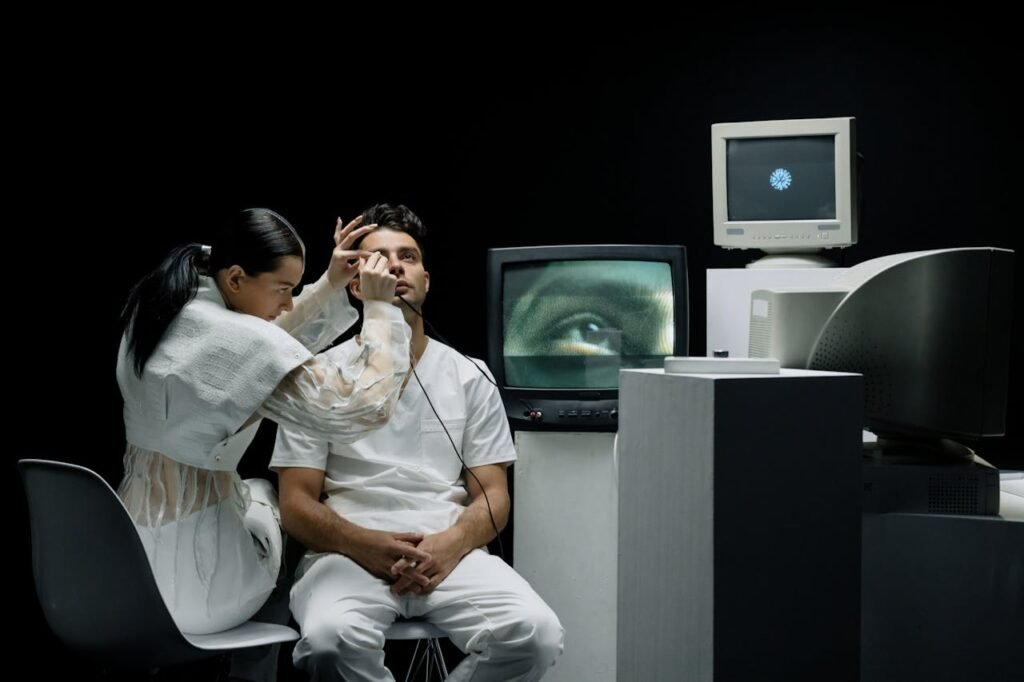Eye Floaters: Causes, Symptoms, When to Seek Medical Advice, and Treatment Options

Have you ever noticed specks or threads drifting across your field of vision? These visual disturbances, commonly called Muscae Volitantes, are small, shadowy shapes that appear to float in front of your eyes but are within the eye itself. They are most conspicuous when viewed against brilliant backgrounds, such as a white computer screen or a blue sky.
This article explores the causes, symptoms, and scenarios when it might be wise to consult a healthcare professional regarding eye floaters.
What Causes These Visual Disturbances?
The inside of our eyes is filled with a gel-like substance called vitreous. As people age, this gel naturally becomes more liquid, causing microscopic fibres within the vitreous to clump together and cast shadows on the retina—the light-sensitive tissue at the back of the eye. These shadows are what we see as floaters. While age is the most common factor, other causes include:
Posterior Vitreous Detachment (PVD) occurs when the vitreous gel pulls away from the retina. It is more common in people over 50.
Inflammation in the eye: Inflammatory processes, such as uveitis, can lead to debris in the vitreous that appears as floaters.
Bleeding in the eye: Conditions like diabetic retinopathy can cause bleeding inside the eye, leading to visible spots.
Retinal tears can be a symptom of a retinal tear, necessitating urgent medical intervention to avert retinal detachment.
Recognising the Symptoms
Understanding its appearance and behaviour can help you determine whether what you’re experiencing is typical or something that warrants a doctor’s visit. Common characteristics include:
Spots in your vision: Small shapes or spots that drift in and out of your field of vision.
Threadlike strands: They can appear as squiggly lines, sometimes almost transparent, that move as your eyes move.
Cobwebs: Larger floaters can appear to be a web across your vision, which can be more noticeable when looking at a plain, light background.
These symptoms are usually harmless and annoying but can occasionally signify more severe issues.
When to Consult a Healthcare Professional
While floaters are typically benign, there are certain times when seeing a healthcare provider is crucial:
Sudden increase in floaters: A significant increase in the number of floaters, especially if it happens suddenly, could indicate retinal detachment.
Flashes of light: Visible sudden bursts of light may indicate a severe condition requiring immediate attention: retinal pull.
Vision changes: A shadow or dark curtain blocking part of your vision is a symptom of retinal detachment. Do not wait to see if it goes away.
Treatment Options
For most individuals, no treatment is necessary for floaters, and they often become less noticeable. However, if they become bothersome, there are treatment options available. One of the most advanced treatments is laser therapy, which involves aiming lasers at the floaters to break them up or displace them. This treatment can reduce the appearance of floaters, improving the patient’s quality of vision. Always consult an ophthalmologist to discuss the risks and benefits of laser treatments and other therapeutic options. It is critical to comprehend all available options to make an informed decision regarding managing this condition.
While eye floaters are not typically a reason for worry in most cases, understanding when they may signal something more serious is vital to maintaining eye health. If you experience a sudden increase in floaters, flashes of light, or vision loss, contact an eye care professional immediately. Regular eye examinations can help monitor the health of your eyes and offer peace of mind for those minor yet annoying floaters. Remember, taking care of your vision is critical to your overall well-being.
Author Name: Keira Diaz
